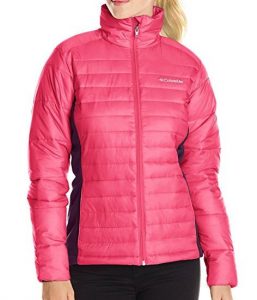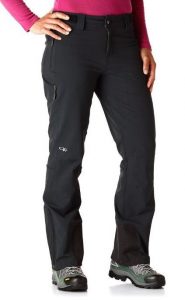Winter Clothing Guide for Outdoor Travel and Photography
We enjoy winter vacations when it’s the off season at many locations in the US. But winter exploration and photography can be a love-hate struggle.
We get asked about the clothing and gear we use when it’s cold. Here’s our winter clothing guide that we consider an important part of our travel + photography gear!

Winter provides unique opportunities to see landscapes and scenes with glistening snow, festive lights, and rosy cheeks. But cold, snow, ice and wind also create challenges for hikers and photographers in the winter.
We know, packing for the winter trip can be a tad overwhelming – you want to keep warm, but also need to stay mobile for those incredible shots. But don’t worry, we’ve got you covered.
In this guide, we’ll run through some essential winter wear we recommend based on our experiences over the years. This list includes the clothing and gear you’ll need to enjoy your outdoor adventures while ensuring you’re well-equipped for any photography opportunities that come your way.
Grab your free winter vacation packing list printable by clicking the image below!
This site contains affiliate links which means WE may receive commissions for purchases made through these links. We only provide links to products we actually use and/or wholeheartedly recommend! As an Amazon Associate, we earn from qualifying purchases. Read the full Disclosure Policy.
Winter Gear for Outdoor Travel and Photography
Here’s a list of essential winter gear you’ll need to fully enjoy your outdoor adventures while being ready to capture any photographic opportunities that come your way.
Winter Photography Gear: When it comes to winter photography, the right gear can make all the difference. As a photographer, being well-equipped with winter photography gear can significantly enhance the photos you take! There are certain travel photography gear items we pack for our outings based on the season and weather. The necessity of winter-specific photography gear in cold temperatures cannot be overstated.
Winter Hiking Gear: When preparing for a winter day hike you want footwear, clothing, and traction devices that can be used for a wide range of winter conditions. Consider the temperature, wind speed, sun, precipitation type, and surface condition for the trail you’ll hike.
Winter Road Trip Supplies: When it comes to hitting the road during the winter months, the cold weather brings unique challenges that call for a well-stocked kit of winter road trip supplies. Having the right gear on board can make the difference between a thrilling winter adventure and a chilling roadside ordeal. It’s all about being prepared.
Winter Clothing Guide for Outdoor Travel
This is the list of clothing items we use for outdoor travel and photography adventures in the winter! Winter gear should always prioritize warmth and comfort to endure the chilly conditions. Here are our must-haves:
Winter Hats
Select a winter hat based on the temperature and length of any hiking you may do.
- A lightweight wool or synthetic hat is best for warmer days or if the hike will require high exertion.
- A warmer, heavier weight hat is best for later in the day or if temperatures are very low.
I find that hats don’t always stay over my ears, especially if I have my hair in a pony tail. I like to wear a Buff headband under my warmer hat. This way, my ears and the top of my head stay warm, even if the hat rises over my ears.
We both really like fleece BUFFS to use as a hat, headband or neck gaiter.

Insulated Boots
When looking for insulated winter boots, they should be rated for 20 below zero Fahrenheit or colder. Single layer insulated boots with the equivalent of 400 grams of Thinsulate insulation or the equivalent are recommended.
Be sure to size your boot by wearing a thicker sock or sock liner to make sure blood circulation isn’t compromised.
Some winter conditions won’t be so extreme in temperature, and waterproof boots will suffice. We always recommend the waterproof boots for all hiking needs that don’t require additional insulation for extreme winter temperatures.
For destinations that will be EXTREMELY cold, we love using Baffin Boots.

Insulated Gloves
Mitts provide more warmth that gloves, but gloves allow individual finger movement. If it’s extremely cold, use an insulating glove inside a waterproof shell mitt to provide dexterity and warmth.
Soft-shell gloves are lighter weight and best used when body movement will heat up your hands and keep them warmer.
Fleece and leather gloves are not recommended for outdoor hiking or photography in the winter.

PHOTOGRAPHY GLOVES: When you operate a camera in cold weather, you quickly realize that fingers are very vulnerable to the cold, and it’s hard to control settings on a camera while wearing heavy gloves.
Special photographers’ gloves provide protection while being thin enough to allow you to operate your camera. Some have fingertip covers that can be opened briefly to allow you to open the battery-compartment door, change memory cards or make camera settings, then resealed to continue providing warmth. Dave finds it hard to operate the camera buttons when using the new touch screen gloves with the rubberized pads at the ends of the fingers.
Also keep hand warmers in the flap of the photographer’s gloves and rechargeable hand warmers in your coat pocket to provide extra warmth to hands when needed. Warmers in your coat pocket also helps keep batteries warm.
Warm Socks
The topic of warm socks is really a matter of personal preference.
The important thing with socks is to make sure that there is plenty of space in your boots to wiggle your toes around as this increases blood circulation and foot warmth.
Things to consider with socks:
- thermal qualities
- durability
- moisture management
- anti-odor
- comfort
- price
Not all socks are created equal. Find the socks that best meet your needs and personal preference to minimize the stress on your feet.
We like merino wool socks from Darn Tough – seriously the BEST SOCKS EVER!
No, this material is not the scratchy material you typically think when you hear the word wool. Merino wool is made of fine, itch-free fibers that are temperature-regulating, so your feet stay comfortable in a wide range of temperatures. Wool can absorb up to 30% of its weight in water, which helps feet stay dry in most conditions.
On EXTREMELY cold days I will need to also use toe warmers, but usually the Darn Tough socks do the trick to keep me warm!

Winter Clothing Guide to Layers
Wearing layers during the winter is so important. What does it mean to ‘layer’? Where do you start? And when is enough, enough?
Avoid looking like the Michelin man by following these guidelines by REI on How to Layer Clothes:
- Base layer (underwear layer): wicks sweat off your skin
- Middle layer (insulating layer): retains body heat to protect you from the cold
- Outer layer (shell layer): shields you from wind and rain
Even if you don’t wear all three layers at the outset, it’s a good idea to take all layers on every outing. You can peel off layers if things heat up, but you can’t put on layers that you didn’t bring along.

BASE LAYER – Wick Moisture
The base layer is next-to-skin, or the underwear layer. It helps regulate your body temperature by moving perspiration away from your skin.
This base layer should be merino wool, synthetic or silk. The most important factor in choosing a base layer is that it should wick moisture away from your skin to the next highest layer of your clothing.
A base layer can be briefs, sports bras, long underwear tops and bottoms, tights and T-shirts. It’s up to you if you like it to fit snugly or loosely.
For very cold temperatures, thermal underwear is available in light-, mid- and expedition-weights. Choose the weight that best matches your activity and the temperature.
MIDDLE LAYER – Insulation
The insulating layer helps you retain heat by trapping air close to your body.
Fleece is usually the best insulating layer because it stays warm even if gets damp, and it dries fast. Fleece also breathes well, so you’re less likely to overheat in it.
The breathability of fleece is great, but the downside is the wind blows right through and takes away the warmth. That’s why you need to have a shell layer with you if you’re going with a fleece middle layer.
MID-LAYER TOPS: Fleece jackets, pullovers, or vests will keep you warm when it’s wet and wick moisture away from your skin and base layers. Add a soft-shell jacket or a down or synthetic fill vest for a bit more warmth (see below). We have found Columbia fleece jackets to be the best!
MID-LAYER BOTTOMS: Fleece pants are breathable and form-fitting. They are water and wind resistant but not waterproof or windproof. The main function of the soft shell layer is breathability. Add soft-shell pants for a bit more warmth (see below).
SHELL LAYER – Weather Protection
The shell or outer layer protects you from wind, rain or snow. Most allow at least some perspiration to escape; virtually all are treated with a durable water repellent (DWR) finish to make water bead up and roll off the fabric.
An outer shell is an important piece in bad weather, because if wind and water are allowed to penetrate to your inner layers, you begin to feel cold. Furthermore, without proper ventilation, perspiration can’t evaporate but instead condenses on the inside of your shell. Fit is another consideration.
Your shell layer should be roomy enough to fit easily over other layers and not restrict your movement.
WATERPROOF/BREATHABLE SHELL: The rain pant helps shield you from high winds and sustained rainfall, and traps the heat held by your mid-layer garments. Look for waterproof, breathable shell jackets with an integrated adjustable hood and at least two exterior pockets to stash hats and gloves. Find waterproof, breathable shell pants that have zips at the bottom of the leg so you can put them on or take them off without having to take off your boots.
WATER RESISTANT/BREATHABLE SHELL: The water resistant, breathable jackets and pants are best for light precipitation and high activity levels. They’re usually made of tightly woven fabrics (such as mini-ripstop nylon) to block wind and light rain.
SOFT SHELL: Soft shell jackets and pants emphasize breathability. Most feature stretch fabric or fabric panels for added comfort during aerobic activities. Many offer both shell and insulative properties, so they in effect combine 2 layers into 1. Soft shells include cold- and mild-weather options.
INSULATED SHELL: Insulated jackets and pants offer the best protection for extreme cold. Some outer shells have a layer of insulation built in—such as fleece—making them convenient for cold, wet conditions, but not as versatile for layering in fluctuating temperatures.
The insulated jackets at Columbia are amazing! The TurboDown and OmniHeat products really do keep you warm. And that’s saying something from someone who gets cold so fast. Columbia is my go-to jacket every time!
When you’re taking a break during a winter hike and have stopped moving, it’s best to pull a big puffy insulated jacket out of your backpack and wear it over your other clothes to stay warm.

















